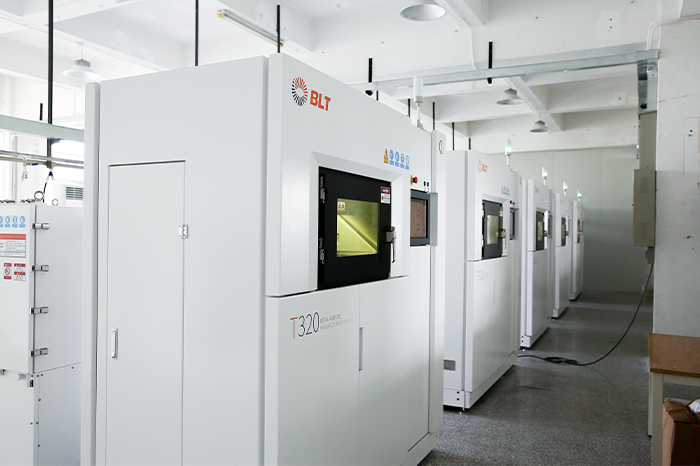
Views: 222 Author: Amanda Publish Time: 2025-10-01 Origin: Site








Content Menu
● Understanding Electronics Enclosures and Their Importance
● Why 3D Printing is Ideal for Electronics Enclosures
● Materials Used in 3D Printed Electronics Enclosures
>> Resins
● 3D Printing Technologies Relevant for Enclosure Manufacturing
>> Fused Deposition Modeling (FDM)
>> Selective Laser Sintering (SLS)
● Design Considerations for 3D Printed Electronics Enclosures
>> Wall Thickness and Structural Integrity
>> Heat Dissipation and Ventilation
>> Mounting Features and Assembly
>> Surface Finish and Aesthetics
● The Production Process: From CAD to Functional Enclosure
● Applications of 3D Printing in Electronics Enclosure Manufacturing
>> Industrial and Commercial Electronics
>> OEM and Low-Volume Production
● Innovations and Future Trends in 3D Printed Electronics Enclosures
>> Integration of Conductive Materials
>> Sustainable Materials and Processes
● Frequently Asked Questions (FAQ)
>> 1. What materials can be used for 3D printing electronics enclosures?
>> 2. How does 3D printing improve customization for electronics enclosures?
>> 3. Can 3D printed enclosures protect against water and dust?
>> 4. What are the limitations of 3D printing for electronics enclosures?
>> 5. How long does it take to 3D print a typical electronics enclosure?
In the rapidly evolving world of electronics, the demand for custom, precise, and durable enclosures is greater than ever. 3D printing has emerged as a revolutionary technology enabling manufacturers to meet these demands efficiently. This article explores how 3D printing serves as an invaluable tool for producing electronics enclosures, highlighting its advantages in precision and customization, and detailing the processes and materials involved.

Electronics enclosures are protective housings designed to safeguard electronic components from environmental hazards such as dust, moisture, impact, and electromagnetic interference. They play a crucial role in:
- Extending the life of electronic devices
- Ensuring safety during operation
- Facilitating heat dissipation
- Enabling aesthetically pleasing designs
Conventionally, enclosures are manufactured using methods like injection molding, sheet metal fabrication, or machining. However, these can be costly and time-consuming, particularly for small production runs or prototypes.
The advent of 3D printing technology has dramatically altered how companies approach enclosure production. The key benefits include:
- High accuracy: Advanced 3D printing machines can achieve micron-level precision, essential for electronics where component alignment is critical.
- Complex geometries: Intricate designs with internal channels for wiring or cooling can be realized easily.
- Tailored designs: Unique enclosure specifications can be quickly adapted to fit new product designs.
- Rapid prototyping: Modifications and iterations are faster and more cost-effective than traditional manufacturing techniques.
- Reduced tooling costs: No expensive molds or cutting tools required.
- Lower waste: Additive processes build parts layer by layer, minimizing materials waste.
- Faster time to market: Prototypes and final enclosures can be made in days instead of weeks.
- On-demand production: Manufacturing can be adjusted to order size without retooling.
Selecting the right material is pivotal, balancing protection, durability, and weight. Some commonly used 3D printing materials for electronics enclosures are:
- ABS (Acrylonitrile Butadiene Styrene): Impact-resistant and affordable.
- PC (Polycarbonate): Offers excellent mechanical strength and heat resistance.
- Nylon (Polyamide): Durable with good chemical resistance.
- Standard resins for prototypes.
- Engineering resins that provide toughness and heat resistance.
- Flexible resins for enclosures needing elasticity.
- PEEK (Polyether Ether Ketone): Exceptional thermal resistance, used in high-end enclosures.
- Carbon fiber reinforced filaments: For enhanced strength and rigidity.
Material choice depends on the intended use of the enclosure. For example, enclosures exposed to harsh environments require materials with excellent chemical, thermal, and impact resistance. When electrical insulation is paramount, certain high-performance polymers or specially engineered resins are preferable. Additionally, the weight of the enclosure may need to be minimized for portable electronics, making lightweight materials like nylon an excellent choice.
Different 3D printing technologies suit different enclosure needs depending on production volume, detail, and strength requirements.
FDM is widely used for prototypes and functional parts. It extrudes heated thermoplastics layer by layer. It's cost-effective for many enclosure geometries but may have lower surface finish quality compared to other technologies. FDM is an excellent choice for early-stage prototyping where form and fit need quick validation.
SLA uses a laser to cure liquid resin, producing high-detail parts with smooth surfaces, ideal for detailed and small electronics enclosures. It facilitates complex internal structures and fine features such as slots for buttons and mounting holes.
SLS fuses powdered materials through a laser. It produces durable and complex nylon parts suitable for functional enclosures with internal features. This method does not require support structures, allowing more freedom in geometrical design.
MJF offers fine resolution and high strength in nylon parts, excellent for small batch production and functional enclosures. It is faster than SLS and often produces more consistent mechanical properties.

When designing electronics enclosures for 3D printing, several critical factors are essential for optimizing the final product:
Maintaining a uniform and adequate wall thickness is crucial for the mechanical strength of the enclosure. Walls that are too thin can lead to weak spots and deformation, while excessively thick walls add unnecessary weight and material costs. Typical enclosure walls range between 1.5 mm to 3 mm depending on the material and use case.
Electronic components generate heat during operation. Enclosures must incorporate ventilation holes, heat sinks, or internal air channels. 3D printing allows the creation of complex internal pathways to enhance thermal management while maintaining compact design.
Including screw bosses, snap-fit joints, and precise holes for connectors in the design facilitates assembly and maintenance. These features must consider the tolerances of the printing process to ensure a perfect fit.
Different 3D printing technologies have varying dimensional accuracies, which affect how parts fit together. Designers must account for shrinkage, warping, or layering inconsistencies by adjusting clearances and fit allowances.
Surface smoothness can be enhanced through post-processing techniques such as sanding, vapor smoothing, or coating. High-quality finishes improve both the look and feel of electronics enclosures, which is vital for consumer-facing products.
The production of 3D printed electronics enclosures involves several integrated stages:
1. CAD Design: The process starts with detailed computer-aided design using software like SolidWorks or AutoCAD. Designers create precise models accommodating electronic component dimensions, user interface elements, and mechanical fastening features.
2. Material Selection: Depending on mechanical, thermal, and electrical requirements, the suitable 3D printing material is selected.
3. 3D Printing: An appropriate technology is chosen based on part complexity, surface finish needs, and production volume. The printing setup is optimized for build orientation and support structure placement.
4. Post-Processing: After printing, parts undergo cleaning, removal of support structures, sanding, or chemical smoothing. Coatings such as paint or conductive layers may be applied to enhance aesthetics or electromagnetic shielding.
5. Quality Control and Testing: The enclosure is examined for dimensional accuracy, strength, and environmental resistance. Functional testing ensures it meets IP ratings or thermal management specifications.
6. Assembly and Delivery: Finally, electronic components are assembled into the enclosure, and finished products are prepared for shipment.
The versatility of 3D printing has propelled its adoption across various sectors involving electronics:
Many emerging consumer products, such as wearable devices, smart home gadgets, and drones, benefit from rapid prototyping and low-volume production of custom enclosures. This allows startups and small businesses to innovate without the high upfront costs of traditional tooling.
Industrial sensors, control panels, and ruggedized electronic equipment require enclosures that provide enhanced durability and environmental protection. 3D printing accommodates complex geometries needed for custom mounting systems and thermal management.
Medical electronics demand strict adherence to hygiene, biocompatibility, and sterilizability. Specialized materials used in 3D printing enable manufacturing of enclosures compliant with regulatory requirements. Quick iteration facilitates development in fast-evolving medical technology fields.
Original Equipment Manufacturers (OEMs) and contract manufacturers often need customized enclosures for limited production runs or customer-specific adaptations. 3D printing empowers them to fulfill these orders cost-effectively and rapidly.
Recent advances in 3D printing are pushing the boundaries of what is feasible for electronics enclosure manufacturing:
Emerging printable conductive filaments and inks allow embedding circuitry or antennas directly into the enclosure, reducing assembly complexity and improving device integration.
Printers capable of combining rigid and flexible materials in one build enable enclosures that combine protection with grip or impact absorption.
Future enclosures may embed sensors, wireless charging coils, or other active components during the printing process itself, creating complete electronic assemblies in one step.
With growing awareness of environmental impact, recyclable and biodegradable materials are gaining traction in 3D printing for electronics, supporting circular economy goals.
3D printing has transformed the manufacturing landscape for electronics enclosures by offering unmatched precision, customization, and speed. It allows companies, especially OEMs and manufacturers looking for rapid prototyping or small-scale production, to innovate and deliver high-quality enclosures that meet complex design and functional requirements. As materials and printing technologies continue to advance, the possibilities for electronics enclosure design and fabrication will only broaden, providing even greater opportunities for customization and efficiency.

Materials such as ABS, polycarbonate, nylon, engineering resins, PEEK, and carbon-fiber reinforced filaments are commonly used depending on durability, heat resistance, and electrical insulation requirements.
It enables rapid design iterations and producing unique, complex geometries without the need for new molds or tools, providing flexibility for custom needs.
Yes, with proper design and material selection, 3D printed enclosures can be made to meet IP ratings for water and dust protection, though sealing and finishing treatments might be necessary.
Limitations include surface finish quality (requiring post-processing), material constraints in electrical insulation properties, and cost inefficiency for very large production volumes compared to injection molding.
Printing time varies by size, complexity, and technology but ranges from several hours to a couple of days for prototypes or small batches.
content is empty!
How Vacuum Mold Casting Compares to Silicone Mold Casting for Precision Parts
Vacuum Mold Casting vs. Resin Casting: Key Differences You Should Know
Vacuum Mold Casting vs. 3D Printing: Choosing the Best Rapid Prototyping Method
Best Vacuum Mold Casting Services for Precision Manufacturing in 2025
Top Vacuum Mold Casting Manufacturers Delivering High-Quality Prototypes
Best Practices from Leading Vacuum Mold Casting Companies Worldwide
Top Vacuum Mold Casting Providers for Custom Batch Production
How to Choose the Right Vacuum Mold Casting Service for Your Product